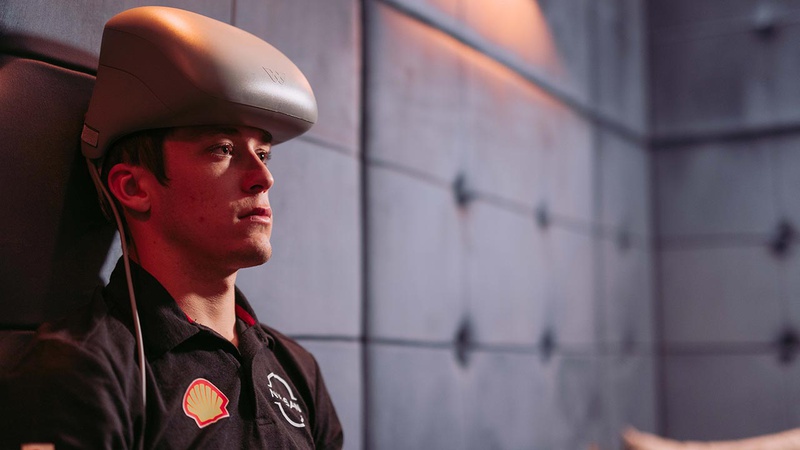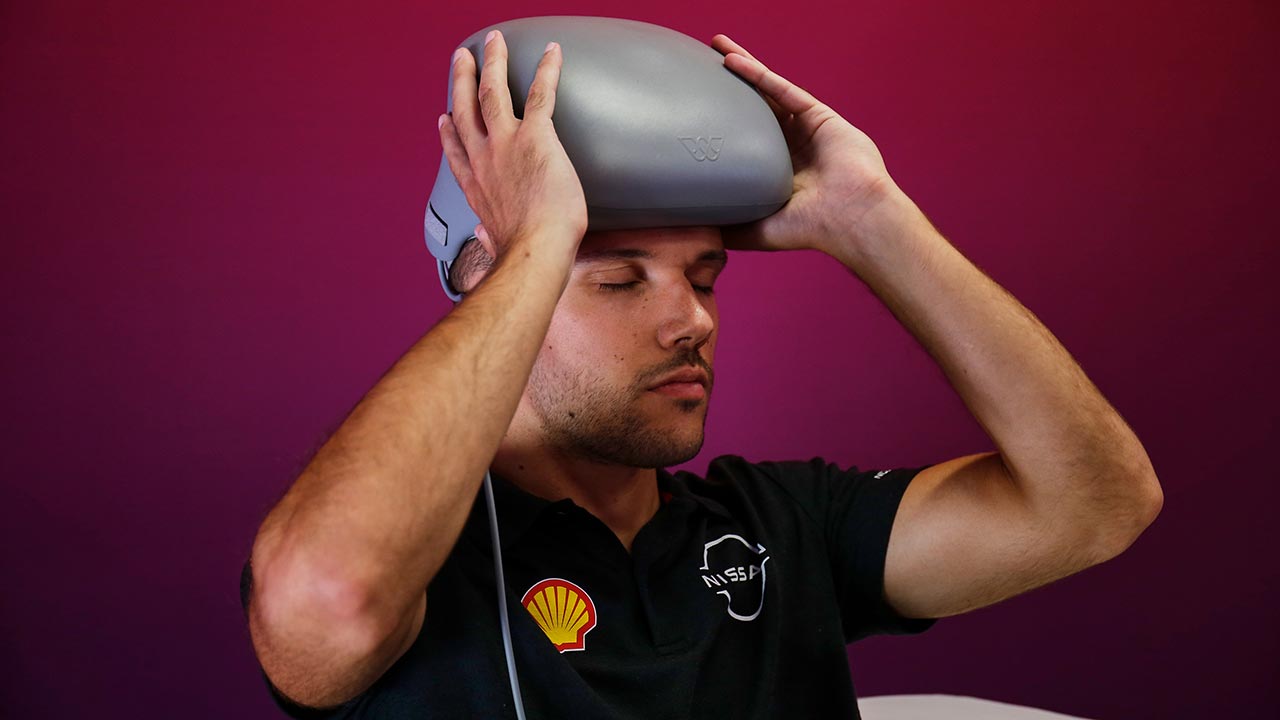During the most recent season of the all-electric open-wheel racing series, Nissan hooked its factory drivers up to a “Sonal device.” This uses certain frequencies to target specific areas of the brain. That may sound like technobabble, but the device’s impacts can be profound.
Wave Neuro, the company behind the Sonal device, has also worked with the U.S. military and football players to help with things like PTSD and brain injuries. It can also be used for less serious conditions, like jet lag and sleep deprivation.
Working with Wave Neuro, the University of Texas at Austin, as well as Nissan’s senior manager for UX innovation, Dr. Lucian Gheorghe, a special training protocol was developed for the team’s Formula E drivers, and the results are promising.
Data from the 2022-2023 season shows that race drivers who participated in Nissan Brain to Performance training experienced improvements in complex decision making, stress and fatigue resilience, and faster reaction times. These improvements can help reduce on-track errors and maximize driver pace and consistency.
Nissan believes that continuous training could enable Nissan Formula E Team drivers to reach the maximum potential of their brains in terms of clarity, which relates to their ability to perform in high-pressure environments, and speed, measuring how quickly they can process information.
“The results following the training program are extremely exciting and demonstrate that with the right tools we can help our drivers reach their full potential,” said Tommaso Volpe, the managing director of Nissan’s Formula E team. “It is thrilling to be pioneers in this area of research within the world of motorsport. Nissan prides itself on daring to do what others don’t.”
Nissan says that the results of this research are likely to extend beyond its Formula E team into the rest of its racing programs. But it’s not just professional drivers that this sci-fi technology may be able to help.




Nissan Formula E Team demonstrates improvements in cognitive function with bespoke brain training program
“Following these encouraging results, we believe this technology could provide a substantial benefit far beyond the world of motorsports,” said Dr. Gheorghe. “We are excited to uncover further opportunities for this to be used in Nissan’s electric vehicles of the future.”
In fact, before hooking the Formula E drivers up to the brain stimulator, Dr. Gheorghe worked with the University of Essex and the Campus Biotech in Geneva, Switzerland. There, the team hooked drivers up to a brain stimulator and put them in a sim racing rig where they were asked to complete 10 sessions on a track they had never seen before. They were able to learn tracks 50 percent faster, and lap the track 50 percent quicker, than drivers who hadn’t had their brains stimulated.
Nissan believes that its research shows that even regular drivers, not just professional drivers, can benefit from this technology. As a result, it is exploring how it could be integrated into its dealerships to help customers improve their driving skills. That’s just the beginning, though. Nissan believes that there are plenty of new and exciting ways that brain stimulation could be applied in the future.
Source: Nissan

